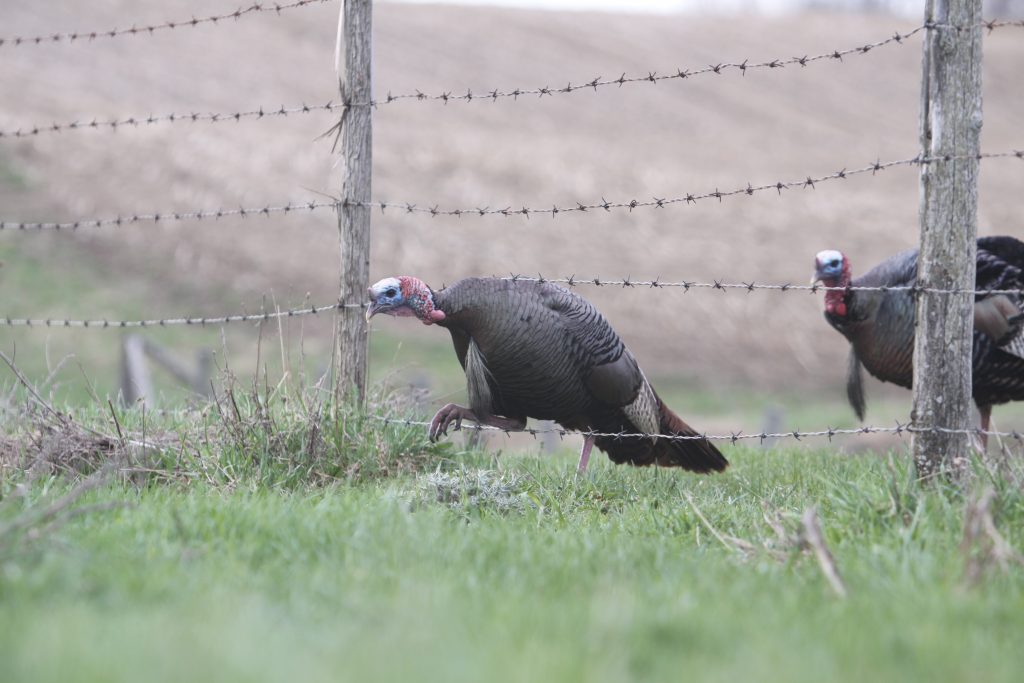Turkeys Don’t Know Boundaries, Neither Should Conservation
The NWTF works across lands of all ownership to deliver its mission.
Over the last five decades, the NWTF has built effective working partnerships with all state wildlife agencies and numerous federal agencies, allowing the NWTF to impact wild turkeys and overall ecosystem health on public lands across the country. Partnerships that are emblematic of this include the NWTF’s new 20-year Master Stewardship Agreement with the USDA Forest Service or the NWTF’s Wild Turkey Technical Committee, to name a couple.
Likewise, the NWTF works with agencies like the Natural Resources Conservation Service to deliver habitat enhancements on private lands. This includes work done through the NWTF’s National Forestry Initiative, which has influenced 333,000 acres since 2018 and has been bolstered by a new version of the initiative signed last year.
However, one of the biggest challenges is reaching private landowners who may be interested in improving their property but do not know about all the existing programs that can increase their property’s value for wild turkeys and overall ecosystem health.
This is where NFI foresters come in.
“There are so many private landowners that would love to be enrolled in the programs that increase their property's value for wildlife, but they just don’t know about them or how to enroll in them,” said Mike Mitchener, NFI coordinator. “Our NFI team does an excellent job holding workshops that inform landowners of all the opportunities that exist, and they are continuously trying to reach new landowners.”
Some of the most beneficial programs that NFI foresters enroll landowners in include the USDA’s Conservation Stewardship Program, Environmental Quality Incentives Program and Farm Service Agency assistance programs. These programs provide financial assistance to landowners and help them improve their property, whether it’s a farm, a forest or a mixture of both.
In Ohio, the EQIP program was recognized by conservation leaders as a direct way to improve wild turkey habitat.
“Private landowner involvement is such an important piece in preserving this iconic species,” said Jon Bourdon, NRCS Chief of Staff. “The wild turkey is an important upland species that thrive in habitats that are attractive to a number of other species. Through EQIP funding, we can promote conservation practices that generate the important nesting and brood-rearing habitat crucial to their survival.”
Likewise, Ohio Division of Wildlife Chief Kendra Wecker recognized the value of the EQIP program for wild turkeys.
“A renewed focus on creating and improving nesting and brood-rearing habitat will provide a much-needed boost for Ohio’s wild turkey population,” she said. “The EQIP partnership provides Ohio landowners with the necessary resources to enhance these spaces for wild turkeys and other native wildlife.”
The success of EQIP in Ohio is representative of how these programs can benefit private landowners across the country.
Additionally, it’s important to note that much of the private lands the NWTF enhances through these programs are part of a more extensive overall habitat system. Working with private landowners through the numerous USDA programs helps benefit habitats otherwise inaccessible to management. This allows for significantly more contiguous habitat for wild turkeys and other species, not to mention making the landowner’s property safer, more resilient and more of an asset. It’s a win for wild turkeys and everyone else involved.

Whether it is public or private land, the wild turkey does not know boundaries. And neither does the NWTF’s conservation delivery.
If you are a private landowner and are interested in learning more about these programs, visit https://www.nrcs.usda.gov/contact/find-a-service-center
